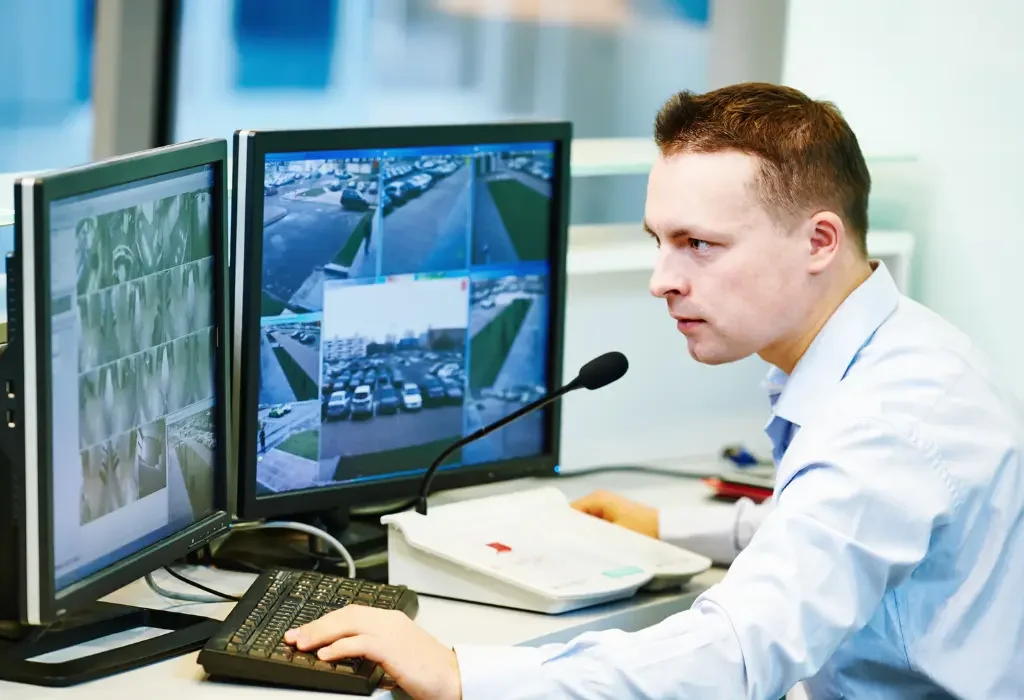In today’s world, security is more important than ever. A well-designed CCTV system can provide peace of mind by monitoring your property and deterring potential intruders. This comprehensive guide will walk you through the steps to design a customized CCTV system that meets your specific needs.
1. Assessing Your Security Needs
Identify Vulnerable Areas: Start by identifying the areas you need to monitor. These typically include entry points like doors and windows, driveways, garages, and any secluded spots around your property.
Determine Your Goals: Understand what you want to achieve with your CCTV system. Are you looking to deter intruders, monitor activity, or collect evidence in case of a security breach? Clear goals will help you design an effective system.
Budget Considerations: Establish a budget for your CCTV system. This will guide your decisions on the types of cameras, recording devices, and additional features you can afford.
2. Choosing the Right Cameras
Camera Types:
- Dome Cameras: Ideal for indoor use with a wide-angle lens. They’re discreet and blend into the environment.
- Bullet Cameras: Suitable for outdoor use, offering long-range visibility and durability.
- PTZ Cameras (Pan-Tilt-Zoom): Provide flexibility to monitor large areas by remotely controlling the camera’s direction and zoom.
- Wireless Cameras: Easy to install with no need for extensive wiring, though they require a strong Wi-Fi connection.
Resolution: Select cameras with the right resolution. Higher resolution provides clearer images but may require more storage. For most residential and small business applications, 1080p or 4MP cameras are sufficient.
Field of View: Choose cameras with the appropriate field of view. Wide-angle lenses cover more area but may lack detail at longer distances, while narrow-angle lenses offer more detail but cover less area.
Night Vision: Ensure your cameras have night vision capabilities to monitor your property in low-light conditions. Infrared (IR) cameras provide clear images even in complete darkness.
3. Selecting the Right Recording Equipment
Digital Video Recorder (DVR): Ideal for wired systems, DVRs record video from analog cameras. They are typically more affordable but offer less flexibility compared to NVRs.
Network Video Recorder (NVR): Best for IP cameras, NVRs offer better video quality and more features. They connect to your network, allowing for easy remote access and management.
Storage: Consider the amount of storage you need. Higher resolution cameras and longer retention periods require more storage. Options include hard drives, cloud storage, or a combination of both.

4. Designing the System Layout
Camera Placement: Strategically place cameras to cover all vulnerable areas. Ensure there are no blind spots and consider the height and angle for optimal coverage.
Wiring and Power Supply: Plan the wiring layout to connect all cameras to the recording device. Use power-over-Ethernet (PoE) for IP cameras to simplify installation. Ensure you have a reliable power supply and consider backup options like UPS (Uninterruptible Power Supply).
Network Considerations: For IP cameras, ensure your network can handle the additional bandwidth. Use a dedicated network for your CCTV system if possible to avoid interference with other devices.
5. Integrating Additional Features
Motion Detection: Enhance your system with motion detection to alert you of any unusual activity. This feature can also help conserve storage by recording only when motion is detected.
Remote Access: Set up remote access to view live and recorded footage from your smartphone, tablet, or computer. Most modern NVRs and DVRs offer this capability through dedicated apps or web interfaces.
Alerts and Notifications: Configure your system to send alerts and notifications via email or SMS when motion is detected or other specified events occur.
Integration with Other Security Systems: Integrate your CCTV system with other security systems like alarms, access control, and smart home devices for a comprehensive security solution.
6. Installation and Maintenance
Professional Installation: Consider hiring a professional installer to ensure your system is set up correctly and optimally. They can handle the technical aspects and ensure everything is working properly.
Regular Maintenance: Perform regular maintenance checks on your system. Clean the camera lenses, check for firmware updates, and ensure all connections are secure. Regularly review footage to ensure your system is capturing clear images.
7. Legal and Privacy Considerations
Compliance: Ensure your CCTV system complies with local laws and regulations regarding surveillance and privacy. This may include notifying people that they are being recorded and ensuring cameras do not infringe on neighbors’ privacy.
Data Protection: Implement measures to protect the recorded footage from unauthorized access. This includes using strong passwords, encrypting data, and limiting access to authorized personnel only.
Conclusion
Designing a customized CCTV system involves careful planning and consideration of your specific needs and goals. By following this guide, you can create a system that provides effective surveillance and enhances the security of your property.
For expert advice and professional installation, contact ezinst today. Our team of experienced technicians will help you design and install a CCTV system tailored to your unique requirements, ensuring peace of mind and security for your home or business.
